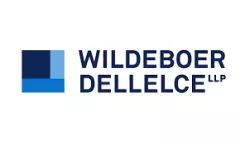In the past 16 months in Canada, $5.1 billion has been raised through publicly-reported convertible debt financings. Despite the size of this figure, convertible debt deals remain relatively infrequent compared to traditional forms of debt and equity financings; consequently, there are often issues concerning the structuring and pricing of convertible debt for both public and private deals.
As such, Wildeboer Dellelce LLP has prepared a comprehensive study of convertible debt deals completed in Canada in the past 16 months, including 93 transactions that have been publicly-reported and 43 private transactions (the "Study"). The Study is designed to provide an overview of the state of the convertible debt market in Canada and insight into the framework for specific deals through this form of financing.
Below are five primary takeaways from the Study.
1. Hybrid Nature
The distinctive aspect of convertible debt financings is that there is no "classic" or "typical" deal. These deals are structured as partially "debt-like" and partially "equity- like". Issuers can structure their deals to mirror traditional equity or debt deals, or anywhere on the spectrum in between, based on the preference of the issuer and the investors.
"Debt-like" convertible debt deals
"Debt-like" deals are fundamentally forward-looking in that the lender's primary expectation is to be paid back. These deals give the lender a modicum of control over the borrower with covenants, guarantees and security agreements working to ensure repayment. The lender can also place restrictions on the borrower's ability to declare dividends, to incur additional indebtedness or to effect transactions with related parties.
"Equity-like" convertible debt deals
"Equity-like" deals are fundamentally focused on the equity upside and thus do not offer the investor similar protections as debt-like deals. These deals are often unsecured and do not contain restrictions on the borrower's ability to incur debt. The Study shows that about three quarter of convertible debt deals are unsecured, which indicates that these deals trend more towards the "equity-like" end of the spectrum and thus are perhaps used in the market as substitutes for traditional equity deals.
2. Industry
The Study highlights that convertible debt deals are spread across a wide range of industries. However, recently convertible debt deals have been most prominent in the cannabis industry. Approximately $1.4 billion has been raised across 41 public deals in the cannabis industry in the past 16 months in Canada, representing 44% of all public convertible debt deals in that period. This should not come as a surprise, as convertible debt is often a popular financing choice for emerging and/or volatile industries given the added layer of protection and equity upside it provides. The Study further highlights that the median deal size is $11.5 million, which indicates that while there have been convertible debt deals completed in the nine-figure range over this time period, this financing structure typically favours smaller deals.
3. Conversion
In a convertible debt deal, the conversion price can be structured as either a "fixed" or "floating" conversion price. In an instrument with a fixed conversion price, the issuer sets the conversion price at a set dollar amount at which the investor can convert the debt for equity of the issuer. Fixed conversion prices have been more popular than floating, particularly with public companies. The structure of instruments with a floating conversion price differs as between public and private companies. Public companies often either (a) set the floating rate at a discount to VWAP at the time of conversion, in which case the conversion right would arise after a set period of time following issuance, or (b) adopt a hybrid of fixed and floating based on the lower of (i) a premium to the VWAP or closing price at issuance and (ii) such lower price as may have been in effect during a short window prior to the conversion notice (i.e. discount to VWAP at conversion time). Private companies typically tie their floating conversion price to a discount to the pricing of a "qualified financing" the company expects to complete in the future. The Study shows that the median premium by which the conversion price exceeds the share price at the time of issuance of the convertible debenture is 25%, but the premium ranges widely.
4. Forced Conversions and Optional Redemptions
Forced conversions and optional redemptions are meant to provide the issuer with rights to cap the upside provided to the investor by a fixed conversion price, and thus limit the issuer's dilution risk.
A forced conversion right is the right of the issuer to force the conversion mechanism offered to holders and therefore limit the holders' upside. If the stock price of the company has increased well beyond the conversion price, the issuer can exercise the right of conversion. Forced conversion rights were present in about one-third of the public deals in the Study and the "trigger" price had a median premium to the conversion price of 148%.
Optional redemption provisions give the issuer the right to buy back the convertible debt at a price equal to the outstanding principal and interest plus a premium. Optional redemptions are usually restricted by waiting periods before an issuer can redeem. About two-thirds of the convertible debt deals in the Study had this early prepayment right and slightly over one-half of those required the issuer to pay a premium to exercise this right.
5. Structure and Size
The three most common structures for convertible debt deals are: (1) convertible loan agreement, (2) trust indenture and (3) debentures with a collateral agent. The structure used is largely dictated by the number of investors. Convertible loan agreements are typically seen in transactions with a single lender, while debentures with collateral agent are ideal for secured deals with a small group of holders. Trust indentures are the most typical structure for public deals as public companies usually have a broad investor base. In trust indentures, the trustee acts as paying agent, registrar, collateral agent (if secured) and the administrative agent. In negotiating the indenture, it is important to provide for sufficient "cure periods" and "requisite consent thresholds" to ensure an orderly process going forward in the event of a default (amongst other things). Just over 50% of the deals included in the Study were governed by a trust indenture and, when looking at public deals only, that figure moves to over 70%.
The content of this article is intended to provide a general guide to the subject matter. Specialist advice should be sought about your specific circumstances.



